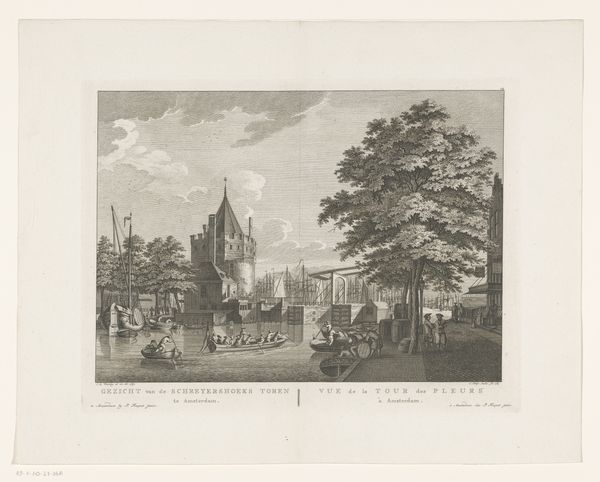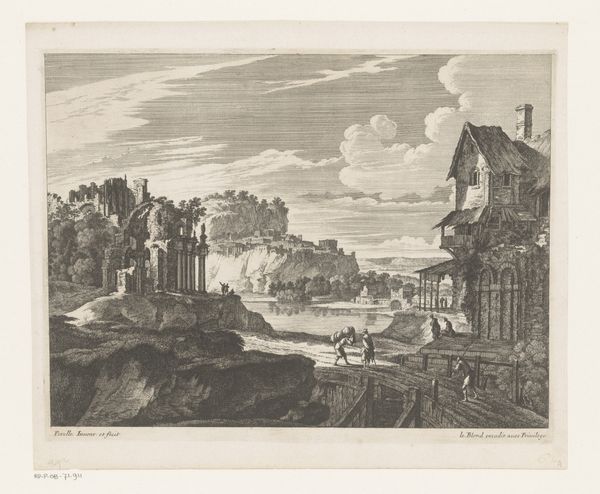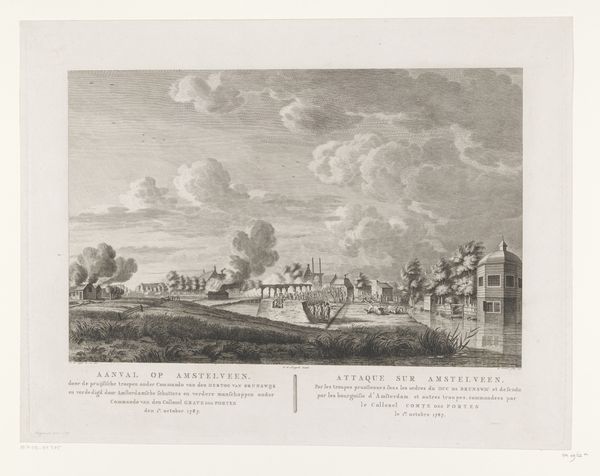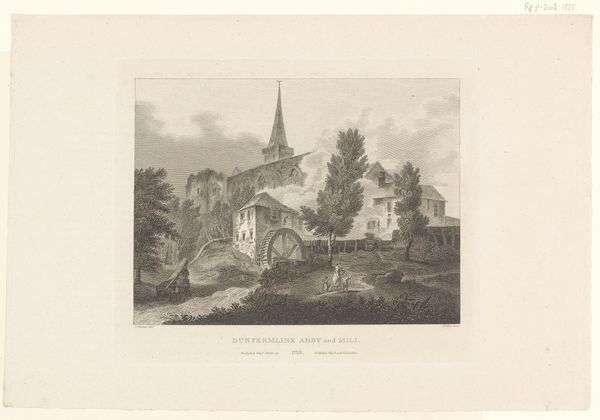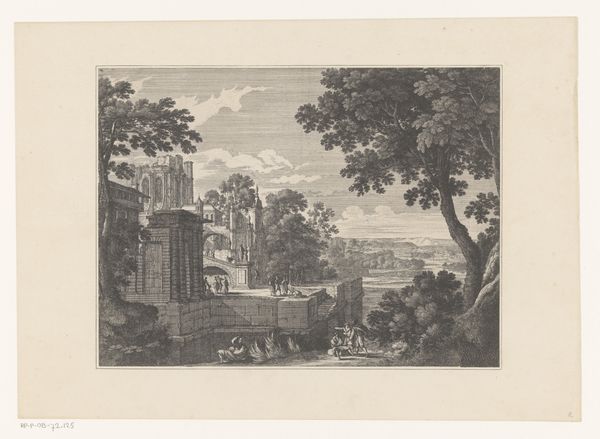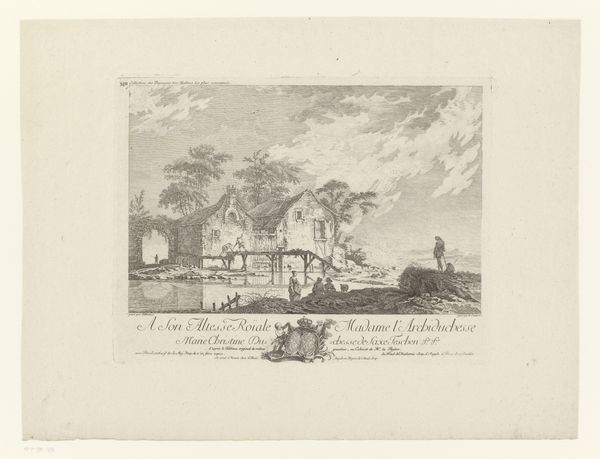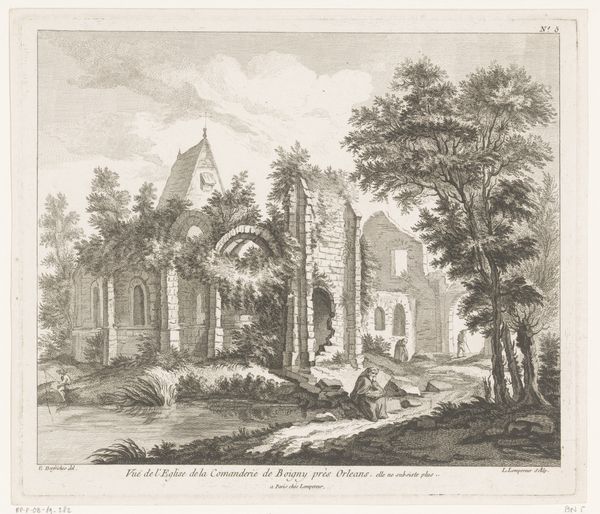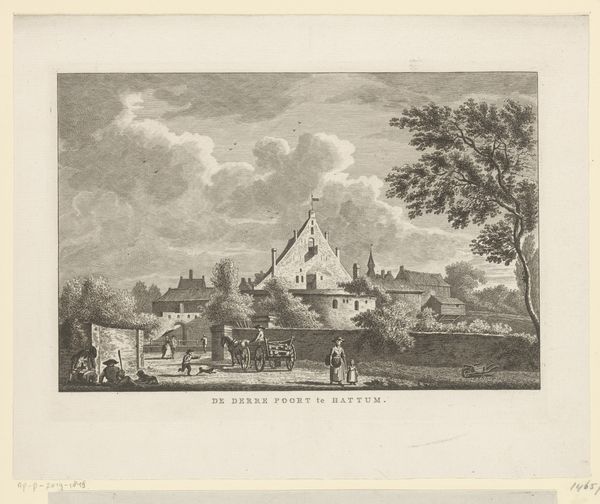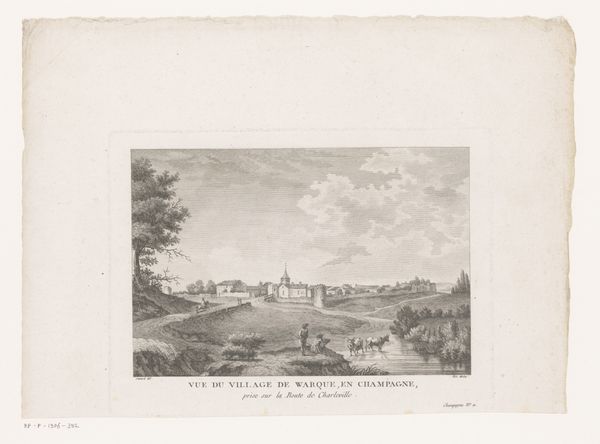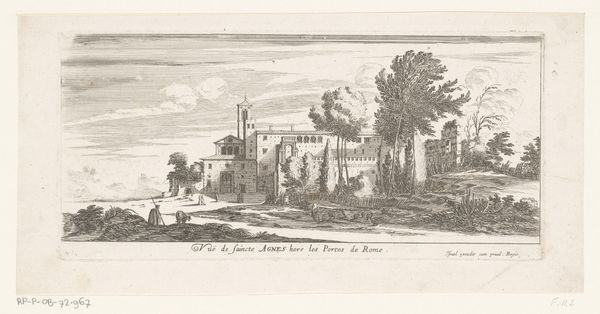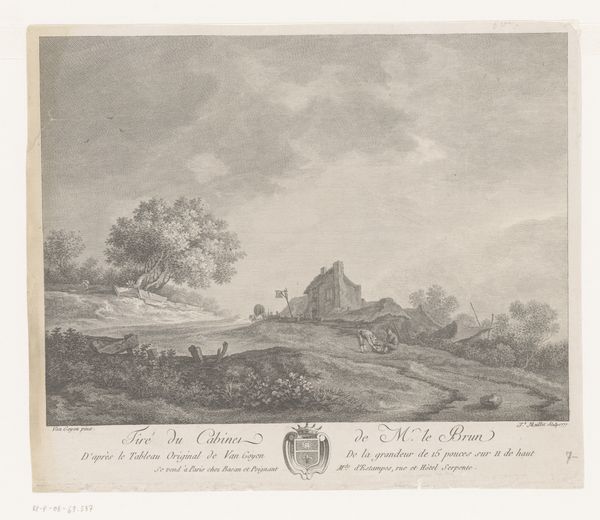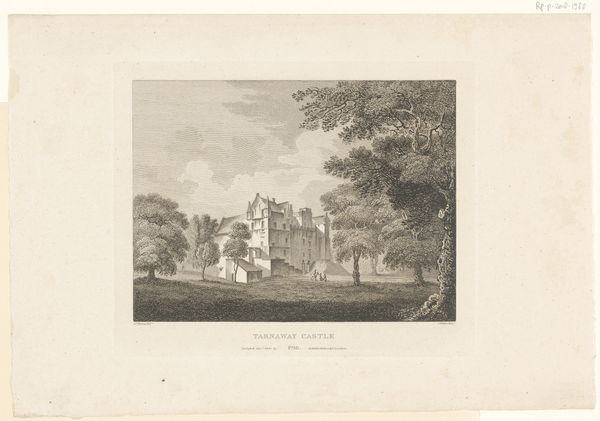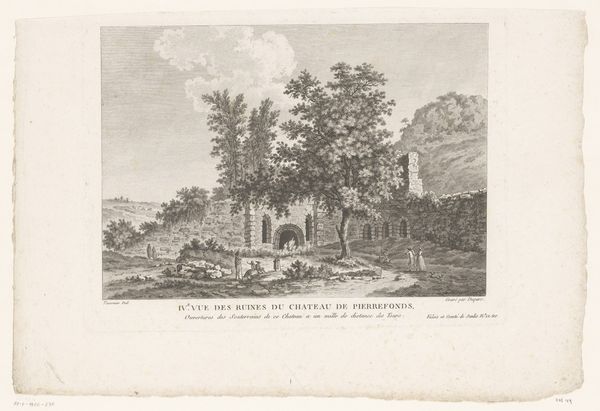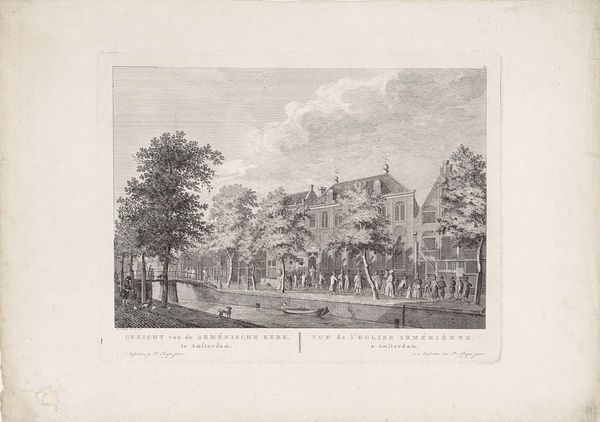
Hædersminde for faldne krigere 2. april 1801 1801 - 1833
0:00
0:00
print, engraving
#
neoclacissism
# print
#
landscape
#
engraving
Dimensions: 350 mm (height) x 439 mm (width) (plademaal)
Curator: This engraving, “Hædersminde for faldne krigere 2. april 1801”, translating to "In Memory of Fallen Warriors, April 2, 1801," was created by Gerhard Ludvig Lahde sometime between 1801 and 1833. It's held at the Statens Museum for Kunst. What's your immediate impression? Editor: A striking balance between meticulous detail and subdued emotion. The monument dominates, yet the human figures create an odd, intimate tableau within the wider landscape. Curator: Lahde employs a Neoclassical compositional structure. Note the calculated placement of the obelisk, firmly vertical against the horizon. See how it reflects principles of balance and order characteristic of the movement. Editor: And that obelisk functions, of course, as the focal point—the symbol of remembrance. The figures clustered near the monument convey a deep respect and solemnity. That grief, though formally staged, reverberates. Curator: Precisely. And how the precise lines of the engraving contribute to the emotional atmosphere. The gradations of tone, the density of lines in shadow versus the airy lightness of the clouds…all intentionally crafted to evoke a sense of quiet reverence. Note too, the texture and gradations that simulate reality and make it readable. Editor: The windmills and the figures evoke a kind of idyllic nostalgia. We can infer the battle context without having to visualize it directly, yet, a romantic distance softens its harsh reality. We aren't shown bodies or bloodshed. Instead, we confront its consequences in this hallowed space. Curator: Exactly. This engraving allows the viewer to enter into a moment of measured reflection rather than explicit suffering. We see the power of line and form operating to guide our feelings. Editor: By subtly channeling our sentiments of loss and memory. The landscape functions as more than just scenery; it becomes an active participant in this quiet ceremony. A memorial constructed to prompt communal sorrow and pride. Curator: Indeed, considering the print's dedication, these visual devices carry significant weight. It’s interesting how such rigid formalism can deliver emotional complexity. Editor: I leave here thinking on what such moments mean within Denmark’s historical memory, what symbolic impact resides even today.
Comments
No comments
Be the first to comment and join the conversation on the ultimate creative platform.
